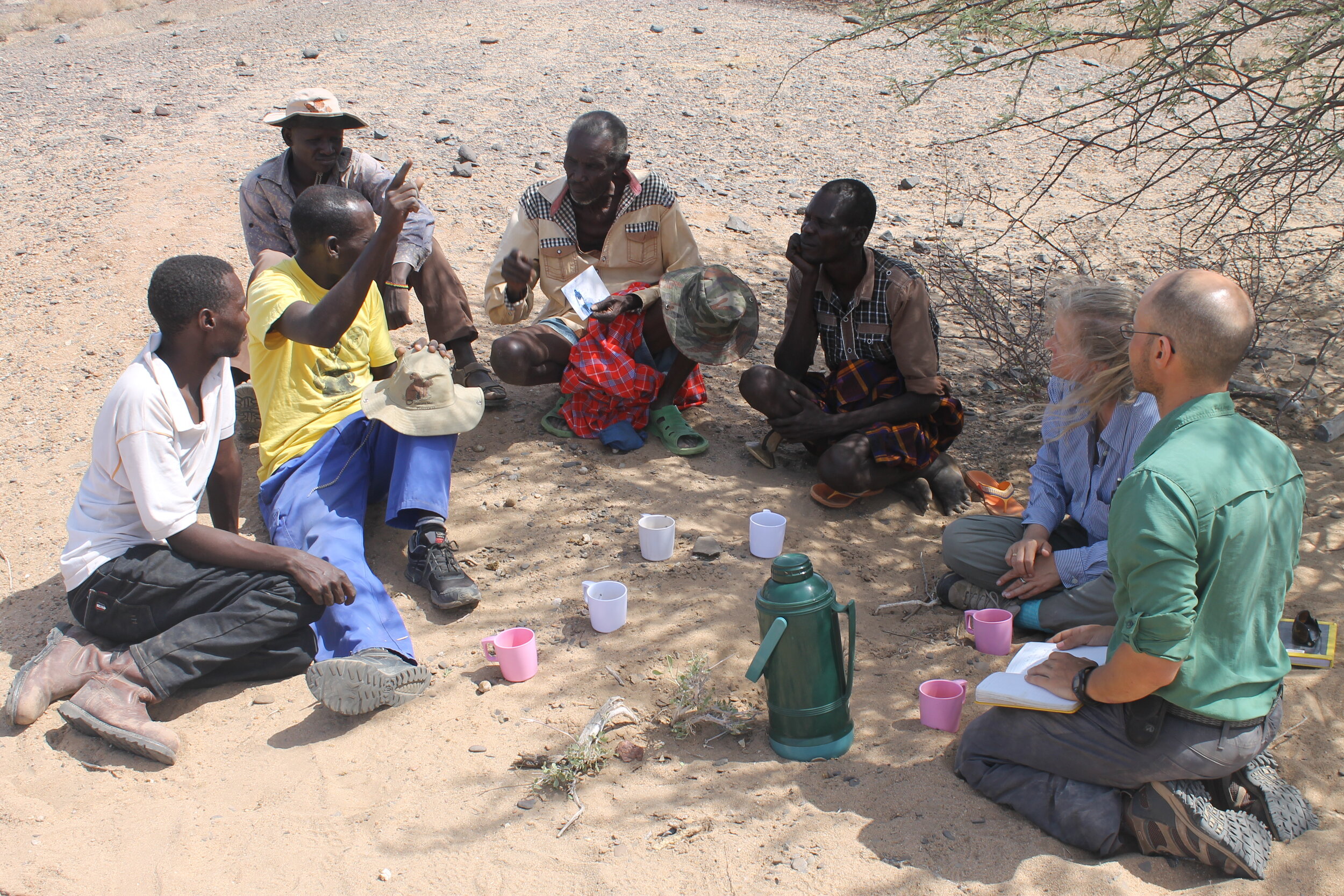The FoodSEARCH Project
Community collaborations in research
In 2017 I began a series of pilot trips to areas in Kenya and Zambia that can be considered “Islands of Indigenous Agriculture”- where people continue to grow African grain crops like sorghum, finger millet, and pearl millet despite the tremendous political and market pressure that have pushed many communities to focus on maize, wheat, and cash crops. I was interested in the deep history of farming in these areas, in discussions with local communities and community leaders people emphasized their concerns over changing foodways and their interest in revitalizing African crops as a way to regain control of their own food future.
These goals gave rise to the Food Security in Eastern African through Reconstructing Crop Histories project (FoodSEARCH). Below you can find more details on both the research and community-oriented goals of the project, and how these different objectives articulate with one another.
Research goals, work package structure, and major research outputs of the FoodSEARCH project.
Food Sovereignty research
Through these meetings we developed a research agenda that integrated scientific questions on the development of farming economies with community-based concerns for how traditional foodways have transformed since colonialism. Together, we laid out the basis of a new research project that integrated archaeology, ethnohistory, ethnobotany, archival history, linguistics, and plant genetics research. Our goals are now to investigate the deep history of community-scale food security in these areas. Our research is heavily inspired by the groundbreaking research on pre-colonial food security by Dr. Amanda Logan. To read more about archaeologies of food security- please check out her outstanding book Here.
Archaeology will reveal how food systems adapted to past climate change, migrations, and interactions with ancient polities. We are also developing a program of ethnobotanical survey and archival history to understand how colonial era policies and reforms impacted traditional farming systems and how farming practices changed over the last ~100 years. Finally, we are working with African crop geneticists and plant breeders to document the existing diversity in African grain varieties to aid in efforts to enhance the productivity and climate resilience of these crops for better local use. The project goal is to find ways that archaeology can help communities enhance their agency in local-scale agricultural economies and food-security strategies.
Community meeting in Salumano, western Zambia
Collaborative research design
Our research begins with a series of discussions with community leaders and farmers themselves concerning their priorities and goals for potential collaboration. Traditional foodways have a core social importance for all of us, and understanding the deep history of food is often an area of major interest. In some cases communities desire information that would help them advocate for better governmental or NGO programs/funding for revitalizing climate-smart African crops that are now falling out of use due to market pressures. In other cases people are interested in complex issues like landrights, establishing museums or historical sites for tourism, or working with local schools. Community reporting and next steps vary place-to-place, and no single approach to community engagement can work even across a small geographic area. These conversations are always complex, but lead to more equitable collaborations that help achieve community goals and further anthropological research together.
A longtime farmer of African grain crops, Mrs. Banda is explaining the ways in which planting and intercropping of finger millet and sorghum have changed since her childhood
Research goals of community-based collaborations
While the nature of community collaborations vary, our research goals are primarily focused on understanding how use of African crops and wild food resources have changed through oral history and within living memory. We aim to use ethnohistoric interviews to bridge the archaeological and historical records with present circumstances of food security. Specific areas of discussion include:
What crops were planted and what times of year? How were planting/harvesting schedules organized and how has this changed as new crops were added?
How have agricultural and post-harvesting technologies/techniques changed in the recent past- particularly as mass-produced goods have become more available?
Have the locations of agricultural fields changed? If so, why? How has this affected use of secondary/wild food?
What kinds of foods were prepared in the past that arent used now? How has cuisine changed as a result of reduced African grain farming?
How have NGO programs impacted use of traditional foods and crops?
What strategies existed for sharing seed stock? How do people select seeds separated for re-planting?
What variables (rainfall, soil quality, seed stock used) affect crop yields for different African grain crops?
What traits are people looking for in seed stock for African grains now vs. in the past? What kinds of traits most need to be improved to ensure continued utility of African grains?
How much do answers to these and other questions vary within, and between, communities participating in this research?
Tea with visitors at Lothagam, northern Kenya. Engatuny (center) had worked with the original site excavator (Dr. Larry Robbins) in the 1970s. When we distributed reprinted photos from the original excavations at community meetings, one made its way to him and he came by to talk with us about that early research.




